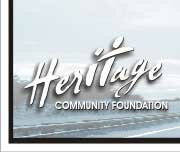
| Home | Search | Sitemap | Help | Contact | Sponsors |
|
|

|

|

|

|
| Home >> Article Database >> A Real Detective Story |
|
A Real Detective Story Alberta Connection Magazine By Marylu Walters They left behind their old newspapers, bottles and even their sardine tins. Early palaeontologists combing Alberta's badlands for dinosaur specimens would get an F for littering the environment. But Darren Tanke is grateful they did. The Royal Tyrrell Museum technician finds valuable clues in the trash palaeontologists left behind in Alberta's badlands in the early 1900s. Tanke, who grew up with a fascination for detective stories, describes one sleuthing expedition that yielded clues: "I saw a brown rock the size of a loaf of bread. I knew it had to be marking something because it was unlike any rocks nearby. I also noted bad clay in the area. Then three feet away there was an old wash pail. I ran up the hill and there was a hole the size of an office desk. I found some plaster of Paris and then sticking out of the side of the hill was a wad of newspapers. From the size of the hole, I could tell it was probably a mid-sized duck-bill (dinosaur)." Paleontologists used newspapers and plaster of Paris to wrap dinosaur fossils for safe transport. Tanke soaked the newspapers in warm water. "I could tell it was a Toronto paper so I could guess it was an expedition from the Royal Ontario Museum (ROM). There was a Model T car ad and a cartoon showing a flapper with an August 31 date on the panel. I got the year from a story about traffic fatalities showing statistics from 1919 through 1926. So, I knew it was August 31, 1927. "Then I went to the ROM field notes from 1927 and discovered they had collected a horned dinosaur skull from the same general area." What clinched it for Tanke was a note saying "This was found in bad clay. It will be hard to take up." In a different "case," Tanke is hot on the trail of a left-handed field worker who had a fondness for sardines. The keys on sardine tins found at one quarry site were obviously unwound by a left-handed person, he concludes. He's hoping to find someone in a photo wielding a pick with their left hand. "But I have to be careful, because some photos in those days were printed backwards." |




